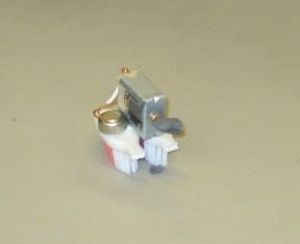To my great shame, my most memorable program failure involved my first attempt at robotics. I had heard about Bristle Bots (or brush bots), I read as much as I could find about them, and I had talked to staff at other libraries who had fun and successful Bristle Bots programs. It seems straightforward enough; adhere a little motor and battery to the head of a toothbrush, glue on some googly eyes, and watch it run around the table.
What went wrong
Things started going wrong in the days leading up to the program as I received the supplies and tried to make a sample project. The motors we had were too big, and the dollar store toothbrushes could not support them. In trying different methods to attach the batteries to the motors, I ended up draining some of the batteries and needed to go to the store to buy more.
At the time of the program, I still wasn’t happy with the project. I made the best of it by telling program attendees the problems with the design, and presenting it as a challenge to design a way to make it work. The closest we came to success was by fastening two toothbrush heads with adhesive foam strips, but we only got the tiniest of scoots before the batteries died or it tipped over. It wasn’t devastating, but it was disappointing.
Look at this sad thing:
What I learned
Having the right supplies is pretty important. We purchased the smallest motors we could find locally, but we should have gone online and perhaps bought these or these. By the time I realized the motors we had were too big it was too late to have smaller ones shipped. The whole thing was a learning experience for me, and after almost two years I will be attempting DIY robots again this summer. I’ll let you know how it goes!
What about you?
At Robot Test Kitchen we believe that learning is at its best when you are ready to fail forward. Do you have a program failure you’d be willing to share with Robot Test Kitchen readers? Contact us and tell us about it.



 gave them access to lots of tape. Our second level of challenge was to create a loop-the-loop. I told the children who completed the second challenge that they could either do a free design, or they could try for two loop-the-loops. Most chose to try for two loops.
gave them access to lots of tape. Our second level of challenge was to create a loop-the-loop. I told the children who completed the second challenge that they could either do a free design, or they could try for two loop-the-loops. Most chose to try for two loops.